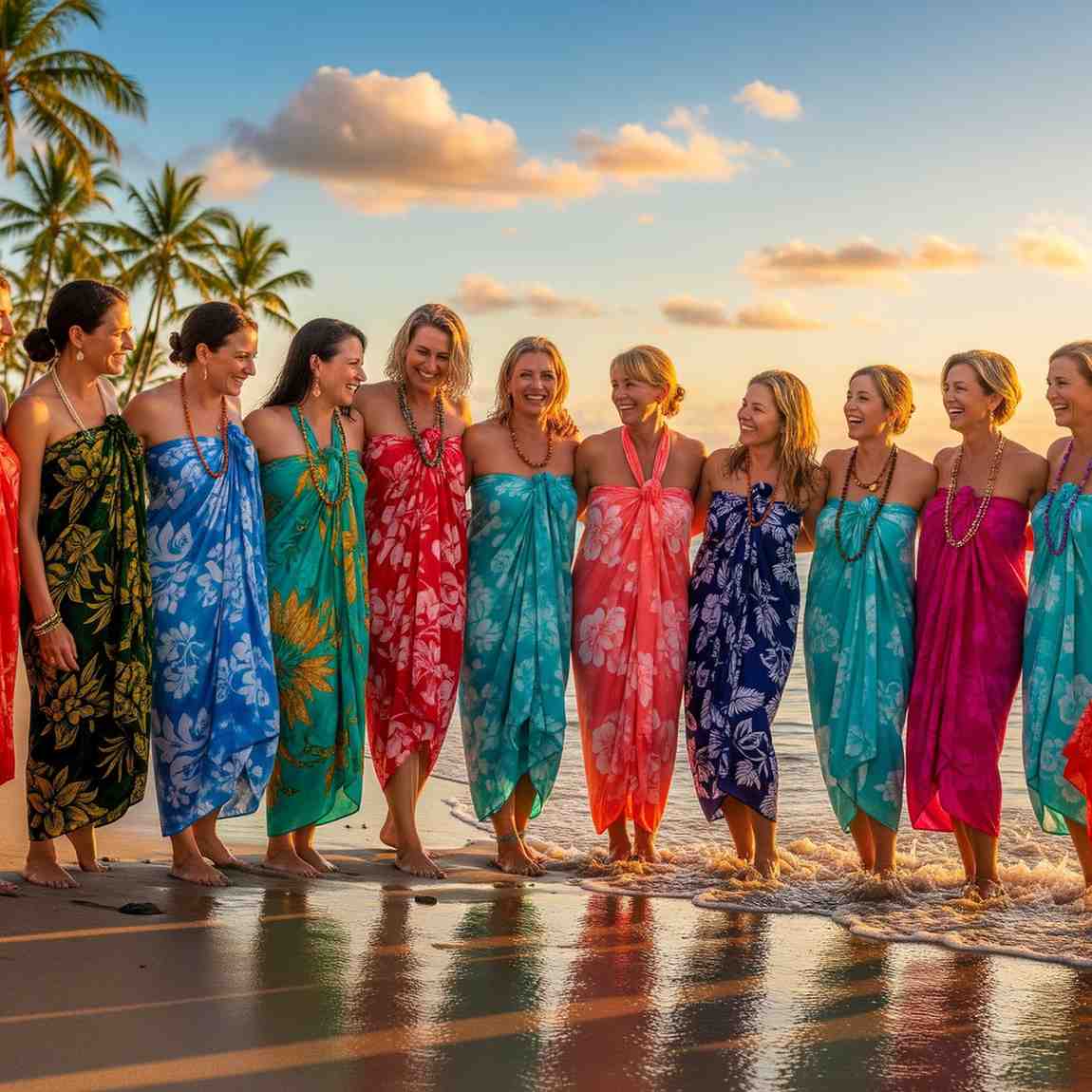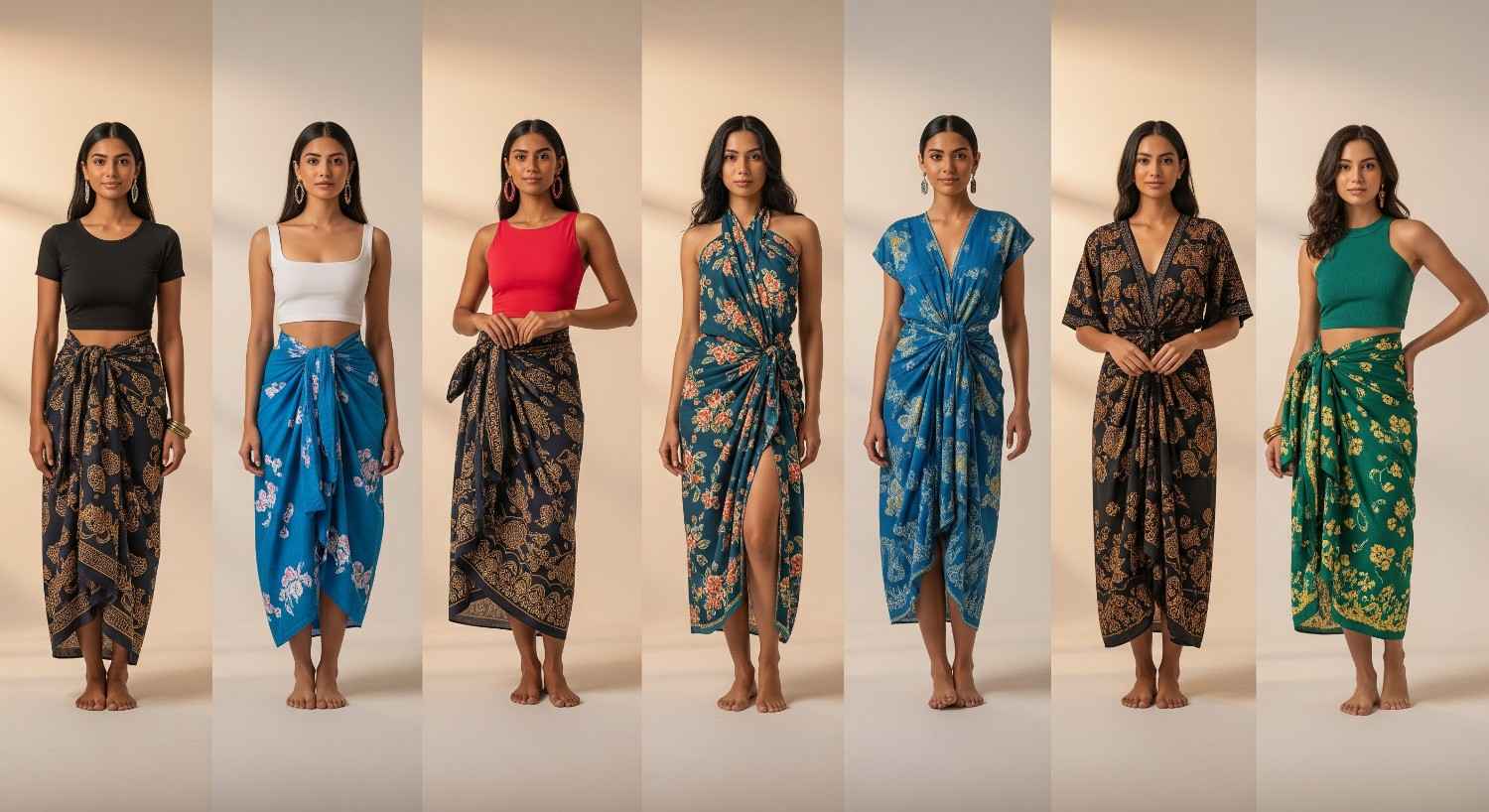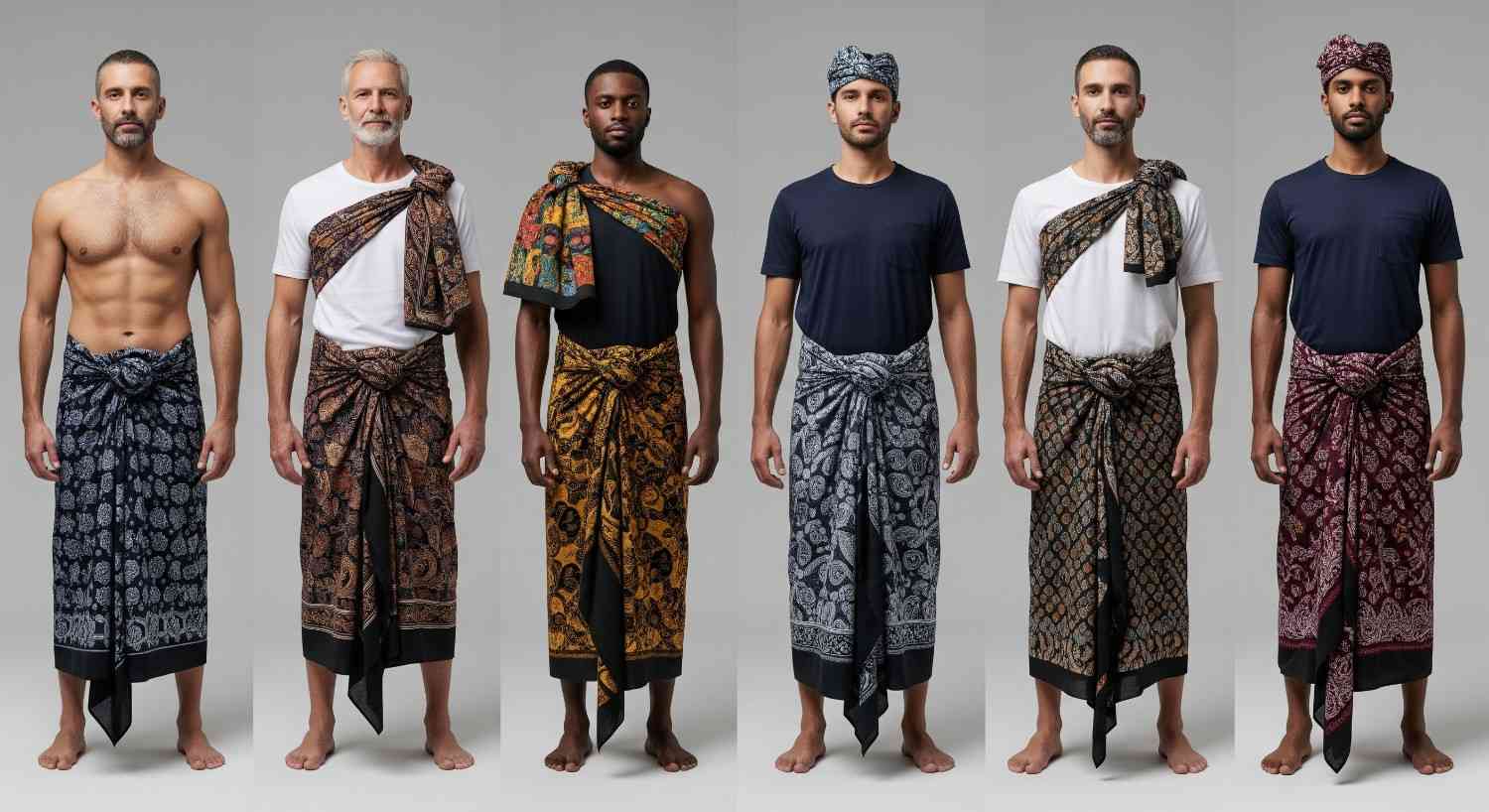
If you’ve ever strolled along a beach or wandered through a tropical market, you’ve likely spotted a colorful wrap tied effortlessly around someone’s waist or draped over their shoulders. That’s when you might wonder, “What is a sarong?”
A sarong is more than just a piece of fabric — it’s a garment rich in history, style, and versatility. Popular in cultures across Southeast Asia and embraced in the United States as a chic and practical accessory, the sarong blends tradition with modern fashion in a way few garments can.
What Is a Sarong?
A sarong (pronounced sah-rong) is a large piece of fabric — often rectangular — traditionally wrapped around the waist and worn as a skirt, dress, or cover-up. The word “sarong” comes from the Malay word sarung, meaning “to sheath” or “to cover.”
While sarongs are most closely tied to Southeast Asian and South Asian cultures, where they have deep cultural meaning and are worn for everyday life, celebrations, and ceremonies, they’ve also become popular worldwide as versatile fashion pieces. In the U.S., you’ll see them as beachwear, poolside cover-ups, and even chic vacation outfits.

Key Features of a Sarong
- Versatility: Can be tied and draped in many ways — from skirts and halter dresses to one-shoulder wraps, scarves, and even head coverings.
- Cultural Significance: In many regions, the colors, patterns, and draping styles symbolize identity, social standing, and tradition.
- Fabric: Often crafted from breathable, lightweight materials like cotton, silk, rayon, or linen, making them ideal for warm climates.
- Patterns and Designs: Ranging from handwoven batik and ikat patterns to modern, colorful prints that fit any personal style.
A Look at Its Cultural Roots
Sarongs have been worn for centuries in countries like Indonesia, Malaysia, Sri Lanka, and throughout Polynesia. Beyond being garments, they carry meaning — the choice of color or pattern can signal heritage, marital status, or community identity.
For example, in Bali, certain sarongs are worn during temple ceremonies, while in the Pacific Islands, sarongs (often called pareos) are tied in specific ways for dances or cultural gatherings.
How It’s Worn
In its most basic form, a sarong is wrapped around the waist and secured by tucking in the fabric or tying a knot. But there’s more to it than the simple wrap — creative tying methods can transform it into multiple styles:

1. Classic Waist Wrap
Wrap it around your waist, tie at the hip or front, and you have an instant skirt — perfect as a beach cover-up.
2. Halter-Neck Dress
Bring the top corners around your neck, tie them, and you’ve got an easy, strapless summer dress.
3. One-Shoulder Style
Wrap diagonally across the body and secure at one shoulder for an elegant, Grecian-inspired look.

Beyond Clothing
In many cultures, sarongs aren’t just for wearing. They can be used as:
- Baby carriers
- Picnic blankets
- Towels
- Improvised hammocks
- Decorative throws for furniture
This adaptability makes them especially valuable in communities where multifunctional items are prized. This adaptability is part of why they remain so popular today. Similarly, if you’ve ever wondered what is a Twilly scarf, it’s another accessory celebrated for its versatility — worn as a neck scarf, bag handle wrap, or even a hair ribbon. Both the sarong and the Twilly prove that fashion can be stylish, functional, and endlessly adaptable.
Sarongs in American Fashion
In the United States, sarongs have been embraced as a staple for summer wardrobes. They’re lightweight, easy to pack, and add a touch of exotic flair to any outfit.
From beach resorts in Florida to backyard pool parties in California, Americans wear sarongs as quick cover-ups, stylish skirts, or colorful shawls. Even major fashion brands incorporate sarong-inspired designs into seasonal collections.
How to Choose the Right Sarong
- Material: Cotton for casual comfort, silk for luxury, or rayon for quick-dry convenience.
- Size: A larger sarong gives more styling options; standard sizing is around 66 x 44 inches.
- Design: Go for bold tropical prints for a statement, or choose solid neutrals for versatility.
If you plan to swim or sunbathe, look for fabrics that dry quickly and resist fading.
FAQs About Sarongs
1. Is a sarong only for women?
No. In many cultures, men wear sarongs daily — just styled differently. In the U.S., men often wear them as beach wraps or casual loungewear.
2. Can I wear a sarong outside the beach?
Absolutely. Pair it with a fitted tank for a casual skirt look, or drape it as a shawl for evening wear.
3. How do I wash a sarong?
Hand-wash in cold water with mild detergent to preserve colors and fabric integrity. Some fabrics, like silk, may require dry cleaning.
4. Is there a difference between a sarong and a pareo?
Yes. A pareo is a Polynesian wrap, often shorter and more brightly colored. A sarong refers to a broader garment style found in multiple cultures.
Why the Sarong Will Never Go Out of Style
So, what is a sarong in today’s world? It’s a garment that bridges tradition and trend. From its cultural symbolism in Southeast Asia to its role as a staple in American summer fashion, the sarong remains timeless.
Whether you’re using it as a quick beach wrap, a travel-friendly dress, or even a home accessory, the sarong proves that simplicity and versatility never go out of style.



